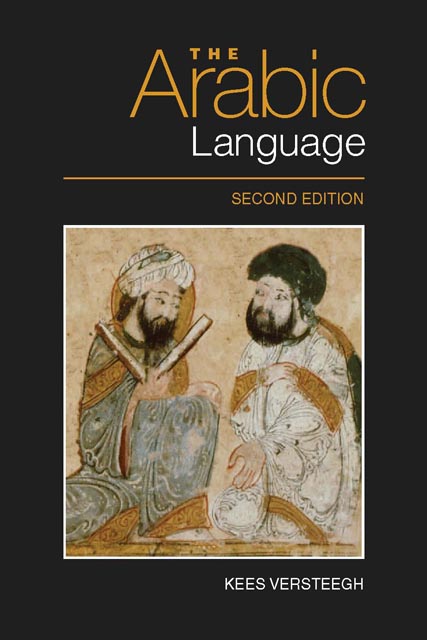Book contents
- Frontmatter
- Contents
- Preface to First Edition
- Preface to Second Edition
- List of Figures and Maps
- List of Tables
- Note on Transcription and Glossing
- 1 The Study of Arabic in the West
- 2 Arabic as a Semitic Language
- 3 The Earliest Stages of Arabic
- 4 Arabic in the Pre-Islamic Period
- 5 The Development of Classical Arabic
- 6 The Structure of Arabic
- 7 The Arabic Linguistic Tradition
- 8 The Emergence of New Arabic
- 9 Middle Arabic
- 10 The Study of the Arabic Dialects
- 11 The Dialects of Arabic
- 12 The Emergence of Modern Standard Arabic
- 13 Diglossia
- 14 Bilingualism
- 15 Arabic as a Minority Language
- 16 Arabic Pidgins and Creoles
- 17 Arabic as a World Language
- Bibliography
- List of Abbreviations
- Index
16 - Arabic Pidgins and Creoles
Published online by Cambridge University Press: 18 November 2022
- Frontmatter
- Contents
- Preface to First Edition
- Preface to Second Edition
- List of Figures and Maps
- List of Tables
- Note on Transcription and Glossing
- 1 The Study of Arabic in the West
- 2 Arabic as a Semitic Language
- 3 The Earliest Stages of Arabic
- 4 Arabic in the Pre-Islamic Period
- 5 The Development of Classical Arabic
- 6 The Structure of Arabic
- 7 The Arabic Linguistic Tradition
- 8 The Emergence of New Arabic
- 9 Middle Arabic
- 10 The Study of the Arabic Dialects
- 11 The Dialects of Arabic
- 12 The Emergence of Modern Standard Arabic
- 13 Diglossia
- 14 Bilingualism
- 15 Arabic as a Minority Language
- 16 Arabic Pidgins and Creoles
- 17 Arabic as a World Language
- Bibliography
- List of Abbreviations
- Index
Summary
Pidginisation and creolisation
In Chapter 8 we have seen that in the course of theArab conquests large numbers of people in theconquered territories learned Arabic as a secondlanguage. Eventually, it became the first languagefor the majority of the inhabitants of the Islamicempire. Inevitably, the way these new learners spokeArabic affected the structure of the language. SomeArabic historians ascribe the changes – or as theycall it ‘the corruption of the language’ (fasād al-luġa) – explicitlyto this second-language learning process. Ibn Ḫaldūnstates that when the Arabs started to mingle withthose who spoke broken Arabic, even their ownchildren took on this way of speaking by beingexposed to it (Chapter 8, p. 138). A modernrephrasing of this idea is Versteegh's (1984)proposal to regard the shift from pre-Islamic Arabicto the new vernaculars as an instance of a processof pidginisation, a radical restructuring of alanguage as part of massive second-languagelearning. The assumption here is that nativespeakers when addressing foreigners use a simplifiedform of their own language. In a short period oftime, and without any formal teaching, the newlearners acquire this reduced variety as a secondlanguage in order to communicate with the nativespeakers and with speakers of other languages. Indoing so, they apply their own strategies oflanguage learning to the input. The result is areduced language variety or pidgin, which may remainin use for a long time as an auxiliary language.When speakers of different languages startintermarrying, they communicate in the reducedvariety and transmit it to their children. Thesethen acquire the pidgin language as their firstlanguage, and through expansion andgrammaticalisation they creolise it, that is,transform it into a new natural language or creole.Most known cases of pidginisation/creolisationinvolve Indo-European languages (English, French,Dutch, Portuguese, Spanish), which were learnt bythe slaves exported from Africa to the New World.Children born to these slaves were exposed to thepidgin from birth and creolised the language.
This model for the emergence of the modern Arabicdialects has been criticised on several grounds.
- Type
- Chapter
- Information
- The Arabic Language , pp. 299 - 312Publisher: Edinburgh University PressPrint publication year: 2014



